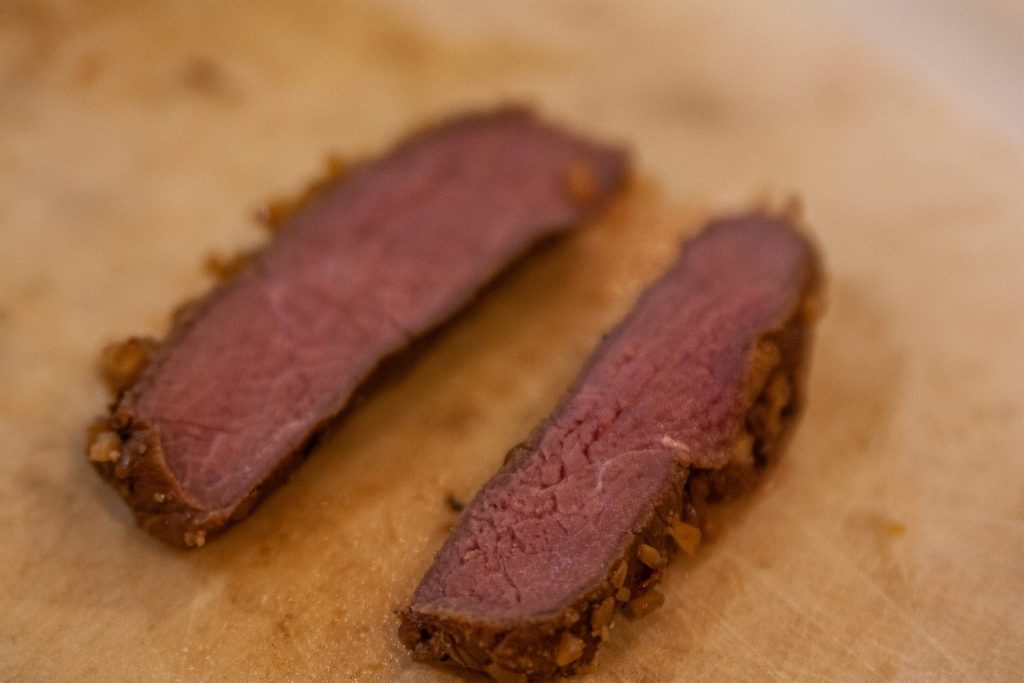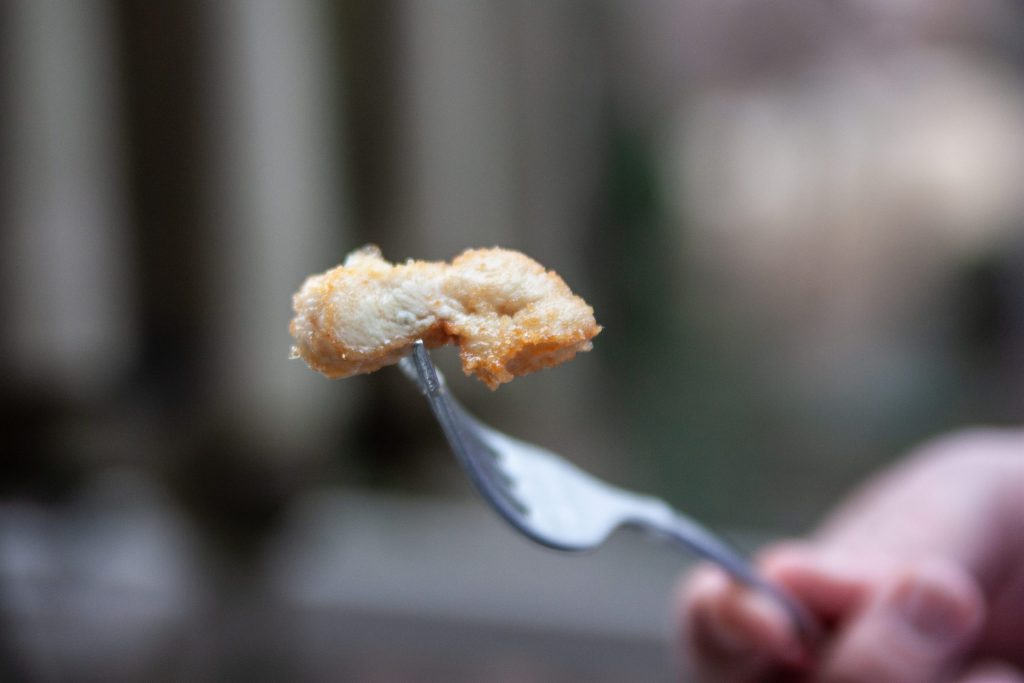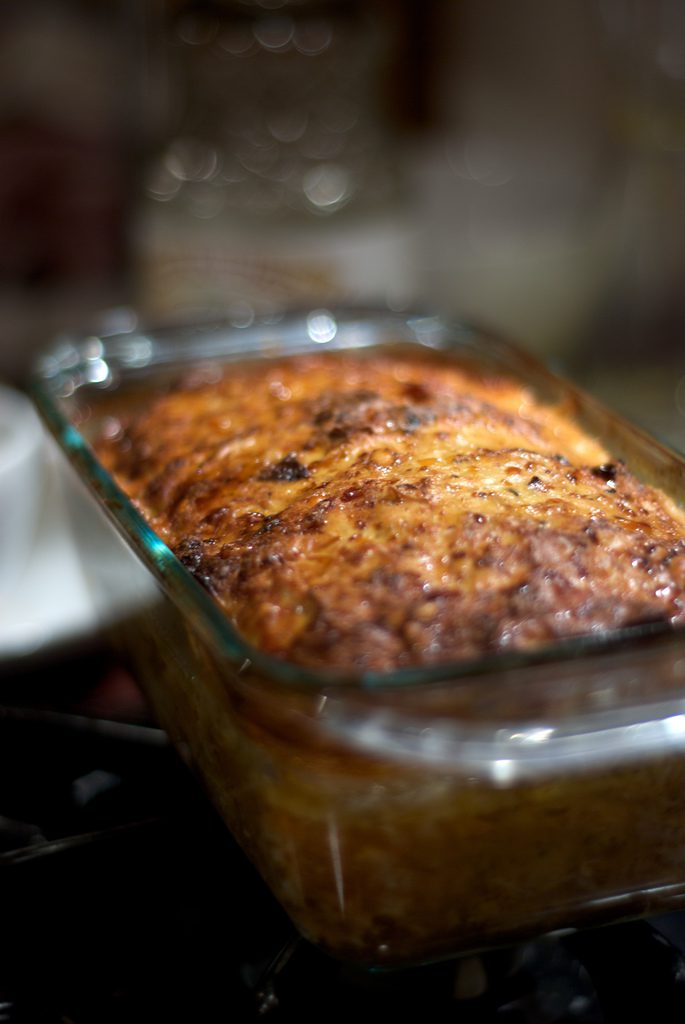Walking into Sean and Sally’s house, I immediately noticed a futuristic gadget protruding from a pot of boiling water and couldn’t help but think of The Sharper Image. If that store still exists, I’ll bet they sell a ton of sous vide circulators. The thing looks like it was meant to be wielded in some galactic battle thousands of years from now. And while it is pretty advanced, the science behind a sous vide is much simpler than lasers and light sabers; it’s basically an electric heating rod with a motor designed to bring water to a programmed temperature and hold it there.
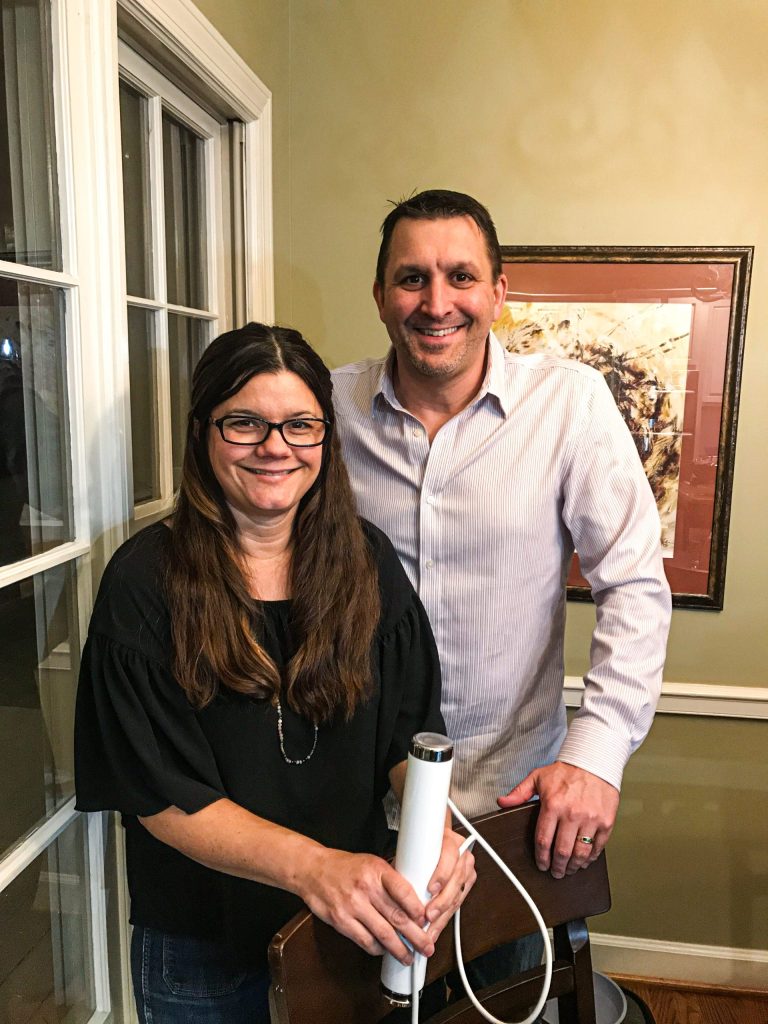
What is it?
The French term “sous vide” translates to “under vacuum.” Meats and veggies are sealed off (typically using a vacuum sealer, but a food safe Ziplock will do) and placed in any available container that can hold water. The heating rod is then placed in the container, regulating the temperature at a user-specified level and constantly keeping it circulated to maintain an even cook. Sean takes no small measure of pride in noting that “One could cook eggs in a hotel sink with this thing if they so chose.” I wasn’t able to confirm whether he knows this from personal experience.
What makes it so special?
Even Sean, who is practically an evangelist for the sous vide movement, was dubious at first. His initial exposure was witnessing his friend plop a perfectly good steak into a bag and boiling it with this strange stick. But half an hour and a quick pan sear later, it was love at first bite. Slicing open a sealed bag of marinated sous vide chicken, Sean fondly recalls the steak that started it all: “It was medium all the way through. There was no gray or undercooked area (See comparison photo from a sous vide manufacturer below). With the sous vide you can cook it and then three hours after it has reached the right temperature, it is still at that temp and doesn’t keep cooking. So I sent Sally a picture and immediately ordered one for us.”
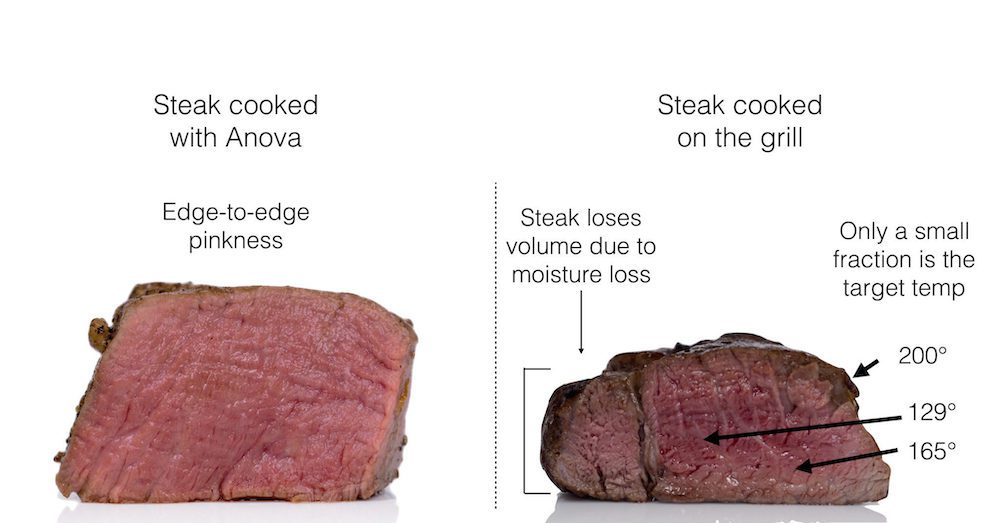
Formerly a serial over-cooker of chicken and pork, Sally has found new culinary acclaim within her family unit for her now juicy and tender meat dishes. “I always overcooked chicken and pork because I got nervous about it, but the sous vide takes all of that worry away. All you have to do is seal the food in a bag and plop it in the pot, set the temperature and let it work.”
In his most recent book, Sous Vide: Better Home Cooking: A Cookbook, Athens based chef Hugh Acheson calls the tool “[A] great way to nail old-school cooking. It is a way to efficiently and cleanly make you a better cook…” The award-winning Georgia restauranteur lauds the tool as a modern culinary breakthrough with wide ranging influence on professional chefs and home cooks alike.
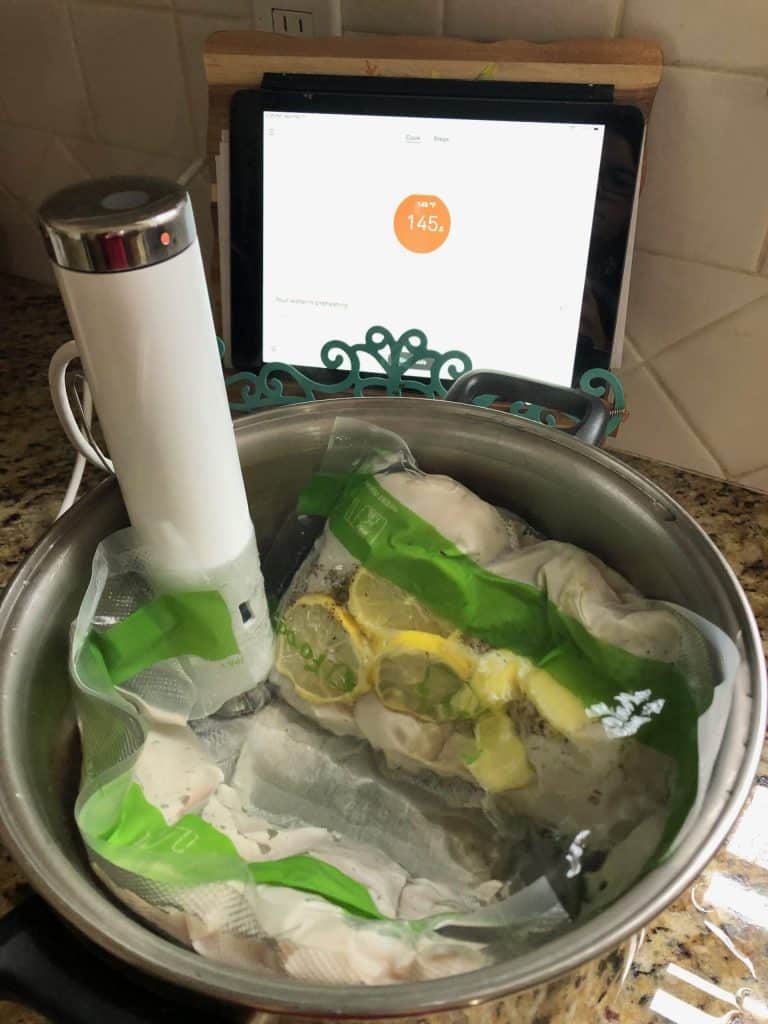
There are plenty of online recipes for sous vide circulators as well as creative cookbooks like Acheson’s. But the device can also be purchased with a built in app allowing users to easily set the cooker for a specific outcome according to the type of food, whether it’s frozen or thawed and the desired doneness.
Sally notes that, “You can also use it to cook corn on the cob, veggies, fish and eggs among other things. We’ve done bacon. Cooked it all night. But it doesn’t look very good when it’s done. It’s white and soggy. But you can sous vide it in the package it comes in then broil it.” This is an important note for would-be buyers. Cooking with a sous vide circulator makes cooking easy, but it still requires another form of texturizing the food after it is cooked. This is typically as simple as a quick pan sear, broil or dunk in the deep fryer.

Sean, an avid hunter, loves to use every part of his deer, which has often been categorized as a tough lean meat. It’s true that venison is almost impossible to cook at medium, but with the sous vide, it’s a breeze. To satisfy my curiosity (and hunger), Sally put the sous vide into action again with a venison tenderloin smothered in an Asian style marinade. Thirty minutes later the meat came out of the bag and was briefly tossed into the fryer. True to its name, the result was a perfectly cooked mouthwatering tenderloin. Thankfully, after our meaty feast the cleanup was incredibly easy.

“It doesn’t make much of a mess. It’s so easy to clean the pot because all it has is water in it. In that sense it saves time,” says Sally while putting a sealed bag of sous vide chicken in the ‘fridge. On that point, Acheson notes in Sous Vide: Better Home Cooking, that “[T]he often long cooking times give you the same freedom that the slow cooker does: the power to walk away from the kitchen and return hours later to a nourishing from-scratch meal.”
The sous vide circulator is available from many brands in many options, including the app based version mentioned. They typically range in price from a hundred to two hundred dollars and are available at many stores and online. No matter which version of this futuristic tool you decide on, it’s helpful to remember that at its core, according to Chef Acheson, “It’s a way to get us cooking more, at home, for the people around us.”
Bon appetit!
